Jacksonville, Fl. — The “Buresh Bottom Line”: Always be prepared!.....First Alert Hurricane Preparation Guide... City of Jacksonville Preparedness Guide... Georgia Hurricane Guide.
STAY INFORMED: Get the * FREE * First Alert Weather app
FREE NEWS UPDATES, ALERTS: Action News Jax app for Apple | For Android
WATCH “Preparing for the Storm”
WATCH “The Ins & Outs of Hurricane Season”
READ the First Alert Hurricane Center “Preparation Guide”
***** ALWAYS CHECK & RE-CHECK THE LATEST FORECAST & UPDATES! *****
*** LOCAL (Jacksonville/NE Fl./SE Ga.) IMPACTS FROM THE TROPICS: None
The Atlantic Basin Overview:
A large cloud of Saharan African continues to spread westward over the Central/Eastern Atlantic while slowly thinning. The dust is not the only reason the Atlantic Basin being quiet, but it helps!
* The European model continues to occasionally shown potential tropical development near the end of next week/next weekend over the SW Atlantic &/or Northern Caribbean. It’s really the only model onboard & even consistency within its own day to day output is seriously lacking which is no surprise. But potential development would generally fit the pattern with sprawling high pressure spread out at northern latitudes + a MJO impulse beginning to push eastward. It’s something to keep an eye on by late next week into the following weekend/early part of the next week.
* An upper level trough is east of the Bahamas producing disorganized thunderstorms. Surface development appears unlikely at this time while the disturbance moves west - may enhance rainfall across Florida over the weekend.
* There has been persistent storminess over the far SW Caribbean but proximity to land should limit development on the Atlantic side... perhaps gradual development once across Central America & into the Eastern Pacific.
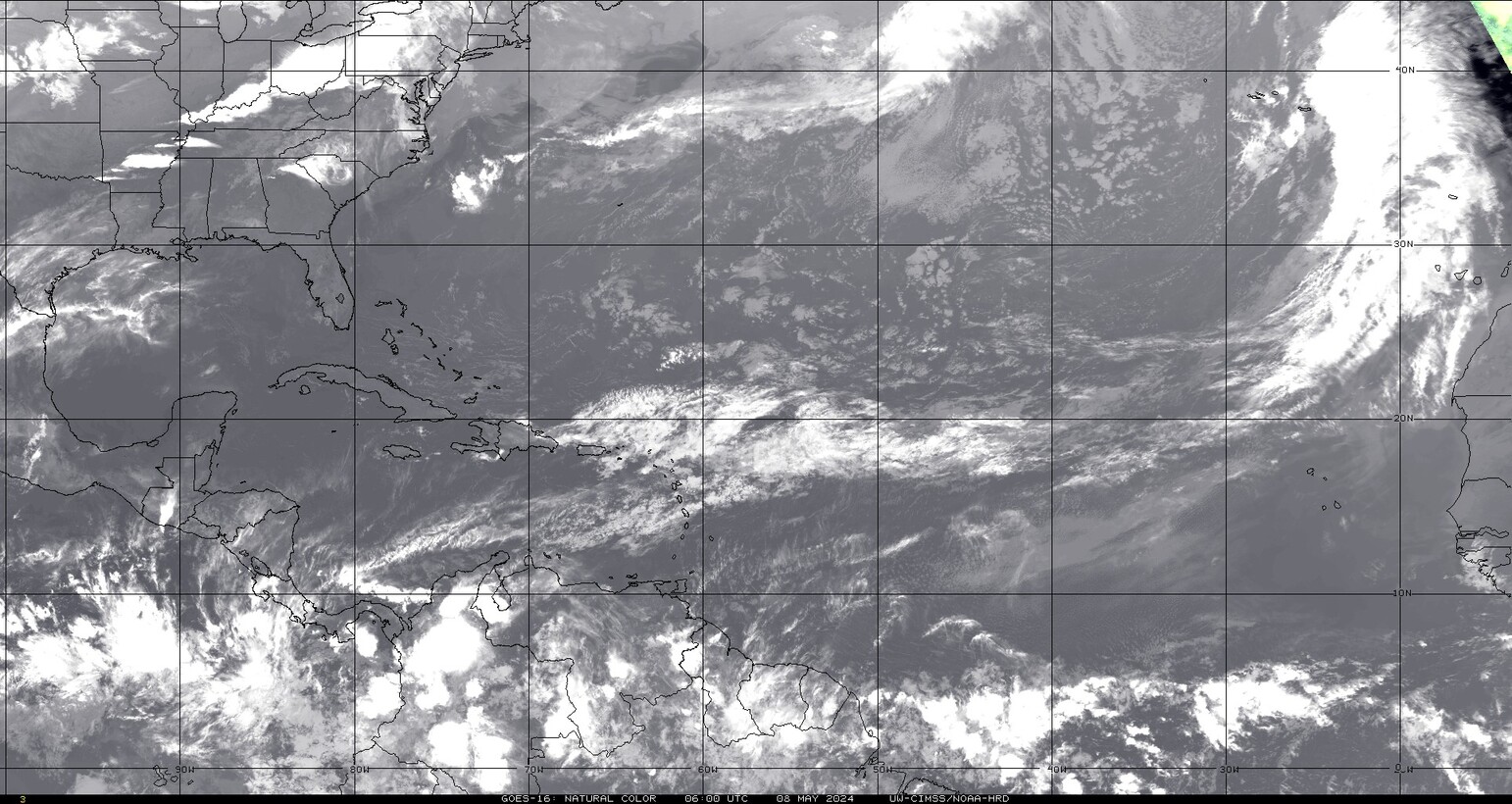
An upper level trough/weak tropical wave will move into the SW Atlantic & near Florida by Fri. into the weekend but there are no indications there will be much surface development but may see an uptick in showers & storms across Florida.



The velocity potential anomalies map below shows a lot of sinking air (brown lines) - & a lack of convection - over the Atlantic Basin to the far East Pacific while rising air (green lines) is over the Central & West Pacific more convection is notable. Often the green areas (MJO pulse) will correlate with increased tropical activity. So it’s the W. Pacific that will be more active now but this pulse should move eastward - signs of which we’re already seeing - by the end of the month & especially into the first two weeks of August helping to set off a return to a more active Atlantic.
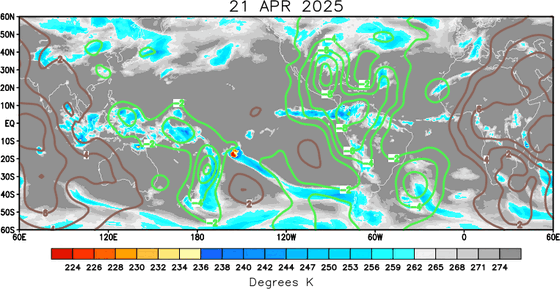
REMEMBER WHEN A TROPICAL STORM OR HURRICANE IS APPROACHING: Taping windows is *not* recommended & will not keep glass from breaking. Instead close curtains & blinds.
Realize the forecast cone (”cone of uncertainty”) is the average forecast error over a given time - out to 5 days - & *does not* indicate the width of the storm &/or where damage might occur.

The upper oceanic heat content (UOHC) [tropical cyclone heat potential/TCHP] across the SW Atlantic, Gulf & Caribbean is unseasonably high for this time of year:






Water vapor loop (dark blue/yellow is dry mid & upper level air):


July tropical cyclone origins (early season breeding grounds are the Gulf &/or Western Caribbean:
Averages below based on climatology for the Atlantic Basin for July (1 hurricane so far, 3 tropical storms):
Wind shear (red - strong shear; green - low shear):



Saharan dust spreads west each year from Africa driven by the prevailing winds (from east to west over the Atlantic). Dry air = yellow/orange/red/pink. Widespread dust is indicative of dry air that *can* interfere with the development of tropical cyclones. However, sometimes “wanna’ be” waves will just wait until they get to the other side of - or away from - the dust plume then try to develop if other conditions are favorable. In my personal opinion, there is way too much “hoopla” about the presence of Saharan dust & how it relates to tropical cyclones. In any case, the peak of Saharan dust typically is in June & July.

2024 names..... “Debby” is the next name on the Atlantic list (names are picked at random by the World Meteorological Organization... repeat every 6 years). Historic storms are retired [Florence & Michael in ’18 (the last time this year’s list was used)... Dorian in ’19 & Laura, Eta & Iota in ‘20, Ida in ‘21 & Fiona & Ian in ‘22]). In fact, this year’s list of names is rather infamous because of the ‘04 season when Charley, Frances, Jeanne & Ivan - all retired names - hit Florida within a matter of about 6 weeks. The WMO decided - beginning in 2021 - that the Greek alphabet will be no longer used & instead there will be a supplemental list of names if the first list is exhausted (has only happened three times - 2005, 2020 & 2021). The naming of tropical cyclones began on a consistent basis in 1953. More on the history of naming tropical cyclones * here *.





East Atlantic:





Mid & upper level wind shear (enemy of tropical cyclones) analysis (CIMMS). The red lines indicate strong shear:
Water vapor imagery (dark blue indicates dry air):

Deep oceanic heat content over the Gulf, Caribbean & deep tropical Atlantic. The colors will brighten greatly as the water warms to greater depths deeper into the season:

Sea surface temp. anomalies:


SE U.S. surface map:

Surface analysis centered on the tropical Atlantic:

Surface analysis of the Gulf:

Caribbean:

Atlantic Basin wave period forecast for 24, 48, 72 & 96 hours respectively:





East & Central Pacific:
Tropical storm “Bud” has developed over the E. Pacific but will soon dissipate - no threat to land:






West Pacific:

Global tropical activity:

Typhoon “Gaemi” hit Taiwan with a landfall Wed. south of Taipei while curling southwest & doing a loop before resuming a west/northwest track. China is next but Gaemi will be significantly weaker.

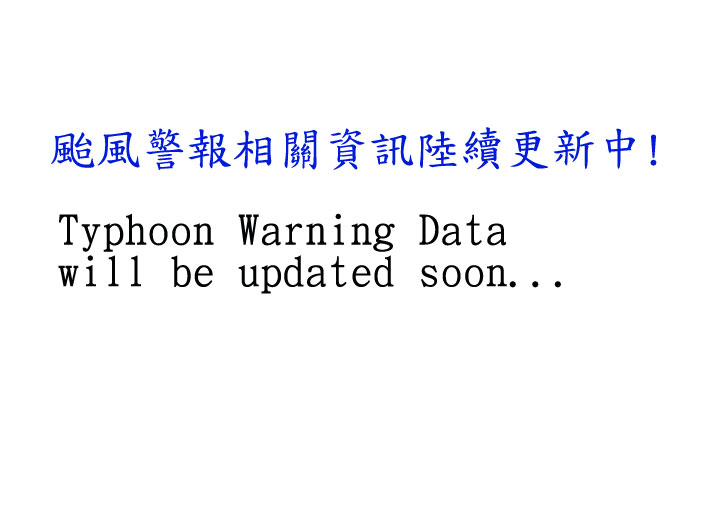


Cox Media Group
:quality(70)/cloudfront-us-east-1.images.arcpublishing.com/cmg/JIFG55NSN5HKZK6LKEZ4C7UU5I.jpg)

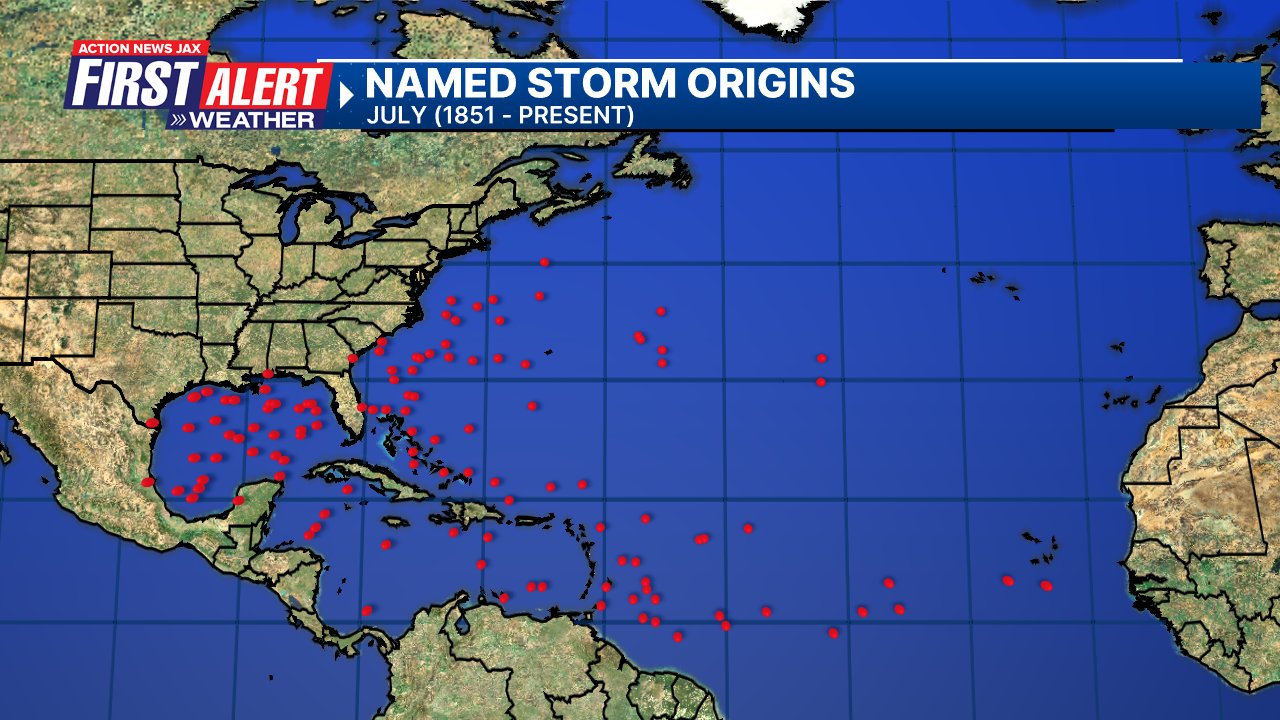

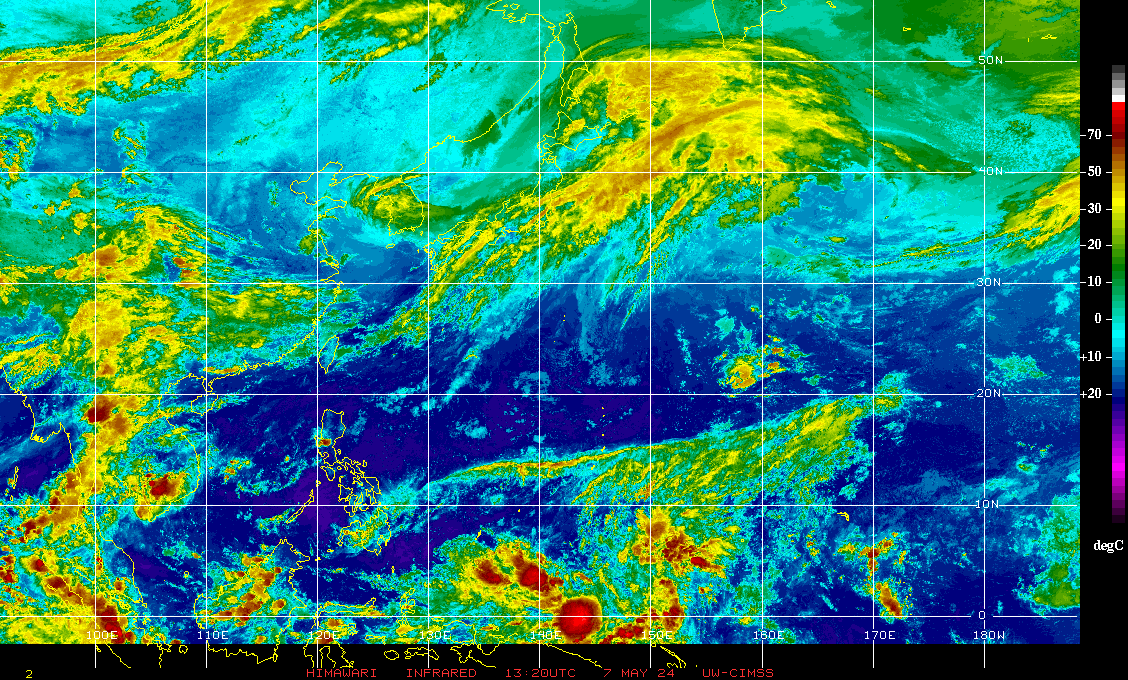
:quality(70)/cloudfront-us-east-1.images.arcpublishing.com/cmg/ATYZEGSZDZH27FEJVJEDLMCYOI.jpg)
:quality(70)/cloudfront-us-east-1.images.arcpublishing.com/cmg/V44EG35K6BARPDL7ZKV4B27JFE.png)
:quality(70)/cloudfront-us-east-1.images.arcpublishing.com/cmg/AAM472WZ4ZCUDDAPPJYWME2IVA.jpg)
:quality(70)/cloudfront-us-east-1.images.arcpublishing.com/cmg/KEMEDOVCD5BECAVG6M4DBO2IIM.jpg)
:quality(70)/cloudfront-us-east-1.images.arcpublishing.com/cmg/ZAB57FZNN5HY3MK23GHWFJ4KCE.jpg)